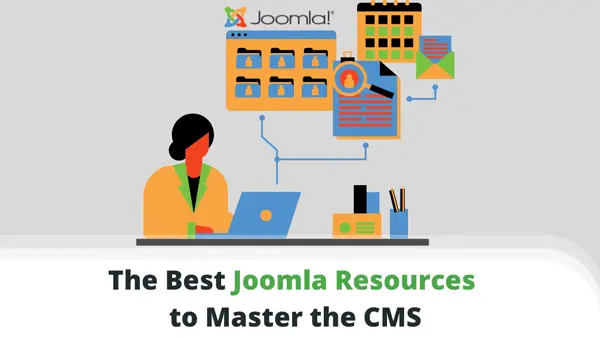Welcome to the world of Joomla! We know you’re excited to start building your own Progressive Web App (PWA), but before you can get to the fun stuff, there’s some background work to be done.
Don’t worry, though—this article provides a step-by-step guide to setting up your PWA in Joomla correctly, so you can get to the good stuff quickly.
Let’s get started!
What is a Progressive Web App?
A Progressive Web App is a tool that offers an app-like experience. It uses modern web technologies to make the user experience fast, reliable, and interesting, no matter your device or connection.
It’s like having the best of both worlds—the convenience of a web page and the power of a native app!
Benefits of using a PWA for your Joomla site
- You can make your Joomla site even more awesome! With a PWA, you can now provide your visitors with a seamless experience across multiple devices, including mobile. Now, no matter where your visitors are, they can access your amazing content.
- You can forget about slow loading times and complicated user interfaces. Since PWAs are designed to be lightweight and optimized for mobile, your Joomla site is sure to load faster and be more responsive.
- Your Joomla site is now even more secure. Because PWAs are deployed on secure servers, they are immune to many common security threats that can affect traditional websites.
- You can give your visitors an app-like experience. PWAs are designed to look and feel like native apps, so visitors can enjoy a more interactive and engaging experience on your Joomla site.
- Say goodbye to expensive app development costs. Since PWAs are web-based, you don’t have to worry about developing a native app for multiple platforms. This can save you a ton of money in the long run.
- You can now reach a wider audience. PWAs can be installed on almost any device, so you can reach an even broader audience than before.
Prerequisites for Building a PWA in Joomla
There are a few things you need before building a PWA in Joomla. The following will set you up for the technical challenges ahead.
- Good understanding of Joomla.
- Willingness to experiment and try something new.
- Patience.
- Good understanding of web technologies, including HTML, CSS, JavaScript, and PHP.
- Willingness to learn more about PWAs and the tools available to build them.
- Understanding the core principles behind PWAs, such as service workers, web app manifests, and push notifications.
- Appreciation for the potential of PWAs to revolutionize how Joomla sites are used and accessed.
Creating a PWA in Joomla
Setting up your own progressive web app in Joomla is actually more simple than it first seems. The process is quite straightforward and involves just a few steps:
Install the necessary plugins or extensions
To create a PWA in Joomla, you will need to get the right plugins and extensions installed. Fortunately, it’s pretty easy. Just head to your favorite browser’s extension store and grab the necessary extensions for your project.
You’ll need a service worker plugin, a script that runs in the background of your app and handles offline content, and caches assets. Various service worker plugins are available, depending on the type of project you are working on. Popular options include Workbox, sw-precache, and sw-toolbox. You can find these plugins on npm, GitHub, and other code-hosting sites.
To ensure that your app is always up to date, you’ll want to use a manifest plugin to create a manifest file that allows you to easily update your app when new content is available.
You may also want to use a caching plugin to optimize the loading of your app by ensuring that all of your content is properly cached to reduce loading times.
You can also use a service worker debugger to help you troubleshoot any issues, such as incorrect caching or failed requests. It can also help you to understand the flow of requests and responses from your service worker, allowing you to debug any issues that may arise.
Finally, you may also want to use a performance analyzer. It can be used to better understand your app’s performance, allowing you to identify potential bottlenecks and areas for improvement. It can also provide insights into how your service worker affects your app’s performance, helping you identify any potential areas for optimization.
Once you have all the necessary plugins and extensions installed, you’ll be ready to create a PWA that lives up to your expectations.
Configure the plugins
Let’s get this party started!
First, you’ll need to set up your PWA by picking a framework like React, Angular, or Vue. Next, you’ll want to configure your plugins or extensions to get a PWA’s full features.
Don’t worry. It’s easier than it sounds! You can use a package manager like NPM or Yarn to install the necessary dependencies and set up everything.
Afterward, you must set up your service worker and configure your caching strategies.
Lastly, you’ll need to make sure your PWA has a manifest file with all the information it needs.
Adding the necessary code to your Joomla site
First, you’ll need to install the Joomla PWA plugin. This is available for free in the Joomla Extension Directory.

Next, you’ll need to create a manifest.json file. This file contains all the information about your PWA, such as the name, description, icons, background color, and other related information.
You can find more information about the format of this file in the Joomla PWA plugin documentation.
Once you’ve created the needed file, you’ll need to add a few lines of code to your Joomla site. This code allows search engines to discover your progressive web app. It also allows users to install the PWA from your site.
Test your PWA in various browsers and devices
Testing your PWA is a great way to ensure your app functions as expected and looks great regardless of which device or browser someone uses.
To begin, you should use an emulator or simulator for your tests. This will allow you to see how the app behaves in different screen sizes and resolutions and ensure that all features are operational.

A great tool to use here is – BrowserStack – a crowd favorite that gives access to 3000+ real devices and browsers.
Finally, don’t forget to have friends and family test your app too! They can provide valuable feedback and help you spot any issues that you may have missed.
Happy testing!
Deploy your PWA to a production environment
First and foremost, you’ll need to ensure that your Joomla PWA is properly configured for the production environment. This usually means setting up the right security protocols, making sure the content is optimized for the environment, and double-checking if all necessary features and functions are working properly.
Once that’s done, you can begin the deployment process. Most of the time, this means putting the PWA on a hosting service like AWS (or ScalaHosting) and linking it to the production environment.
Finally, you’ll want to conduct thorough testing to ensure everything works as expected. Once you’re happy with the PWA, you can move it to the production environment and start reaping its benefits.
Looking for the perfect way to build a PWA in Joomla?
Look no further than ScalaHosting! Our Joomla optimization package has all the features you need to get your progressive web app up and running easily.
With our powerful combination of server-side optimizations, automated tasks, and caching services, you can ensure that your PWA runs at its best. Plus, you don’t have to worry about any technical details—our team of experts will do all the hard work for you.
So don’t delay—get your PWA running today with ScalaHosting!


Wrap Up
Well, there you have it! Building a PWA in Joomla is no small feat, but it can be done.
You’ve now seen the steps you can take to bring this powerful technology to your site. With the help of a Joomla PWA, you can offer your users a seamless and engaging experience with all the benefits of a modern web app. Plus, you’ll use the most up-to-date web technology, making your site fast and reliable.
And if you need help with anything, don’t forget to check out ScalaHosting!
FAQs
Q: How do I make sure that my PWA is secure?
A: You should always use the most recent versions of Joomla and its plugins to ensure your PWA is safe. You should also keep your website up-to-date with the most recent security patches and protect it with a strong password. You should also use a web host that you can trust and offers secure servers, firewalls, and other security measures.
Q: What are some best practices to follow while building a PWA in Joomla?
A: There are several best practices to follow while building a PWA in Joomla. First, you should create a progressive web app that is fast and efficient. To do this, you should ensure your website works well on mobile devices, use caching, and reduce the time it takes to load. You should also utilize reliable libraries and frameworks like React, Angular, and Vue. You should also design, use HTTPS for secure connections, and test your PWA in different browsers and devices.
Q: How can I test my PWA?
A: To test your PWA, you can use the Lighthouse tool – a free, open-source solution for testing and auditing the performance and accessibility of web apps. Additionally, you can check out Chrome’s Developer Tools to test your PWA in different browsers and on mobile. Finally, you can use an online service like BrowserStack.devices.


